Analysis of Macbeth: Sociocultural Context, Hero, and Language
VerifiedAdded on 2020/02/24
|6
|1040
|150
Essay
AI Summary
This essay provides an in-depth analysis of William Shakespeare's Macbeth, examining the play's sociocultural context, the character of the tragic hero, and the effective use of figurative language. The essay begins by outlining the historical setting of the play, highlighting the political mistrust, warfare, and prevalence of witchcraft in 11th-century Scotland. It then delves into the role of the tragic hero, demonstrating how Macbeth, initially a noble character, succumbs to ambition and moral decay, ultimately leading to his downfall. The essay also explores Shakespeare's use of figurative language, including similes, metaphors, personification, alliteration, and biblical allusions, to enhance the play's impact and convey its themes. Finally, the essay discusses the concept of invited readings, demonstrating how the audience's background knowledge and understanding of human nature contribute to their interpretation of the play's events and characters. The essay concludes by emphasizing the consequences of Macbeth's actions, particularly his descent into evil and the resulting psychological and physical torment.
1 out of 6
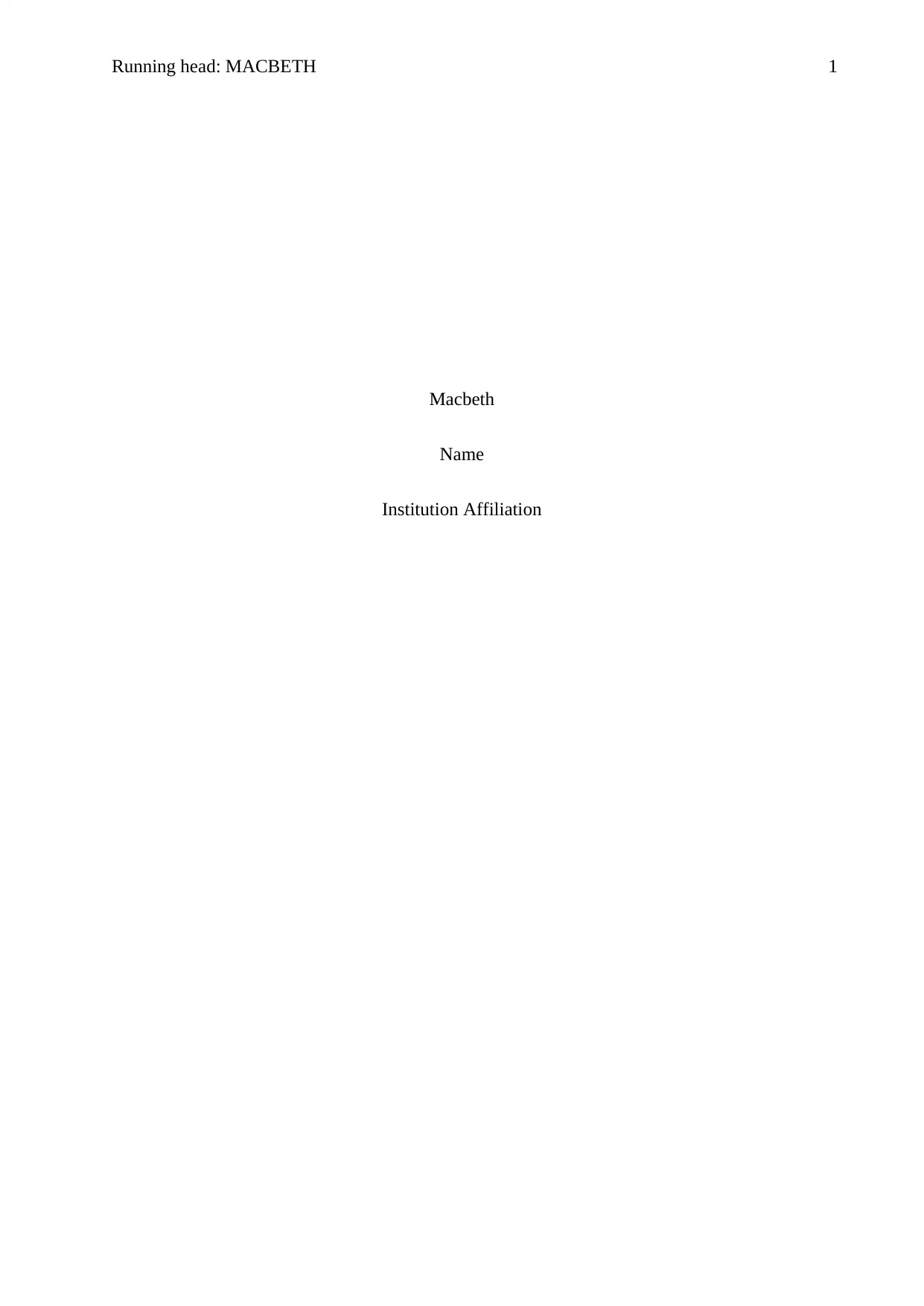
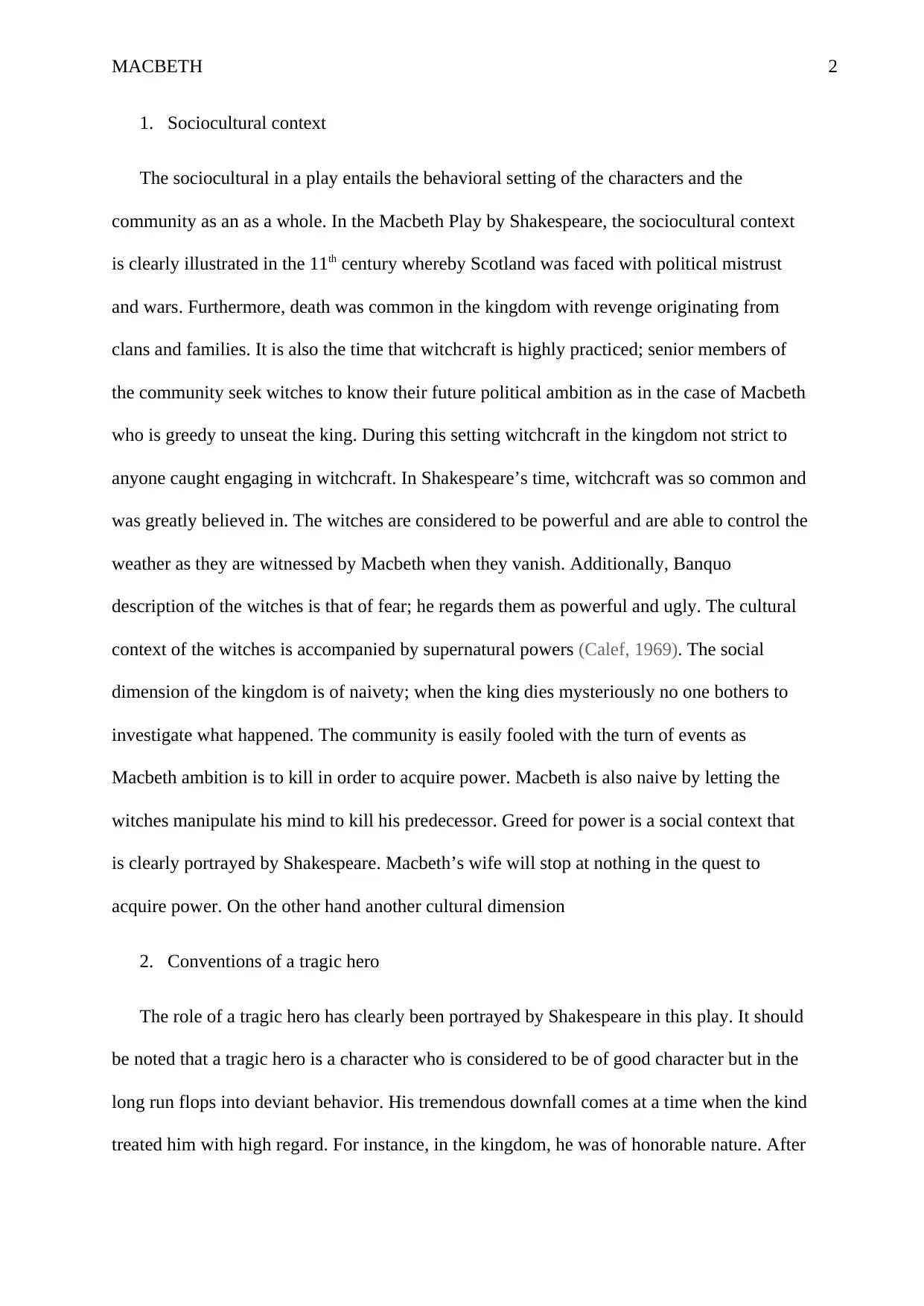
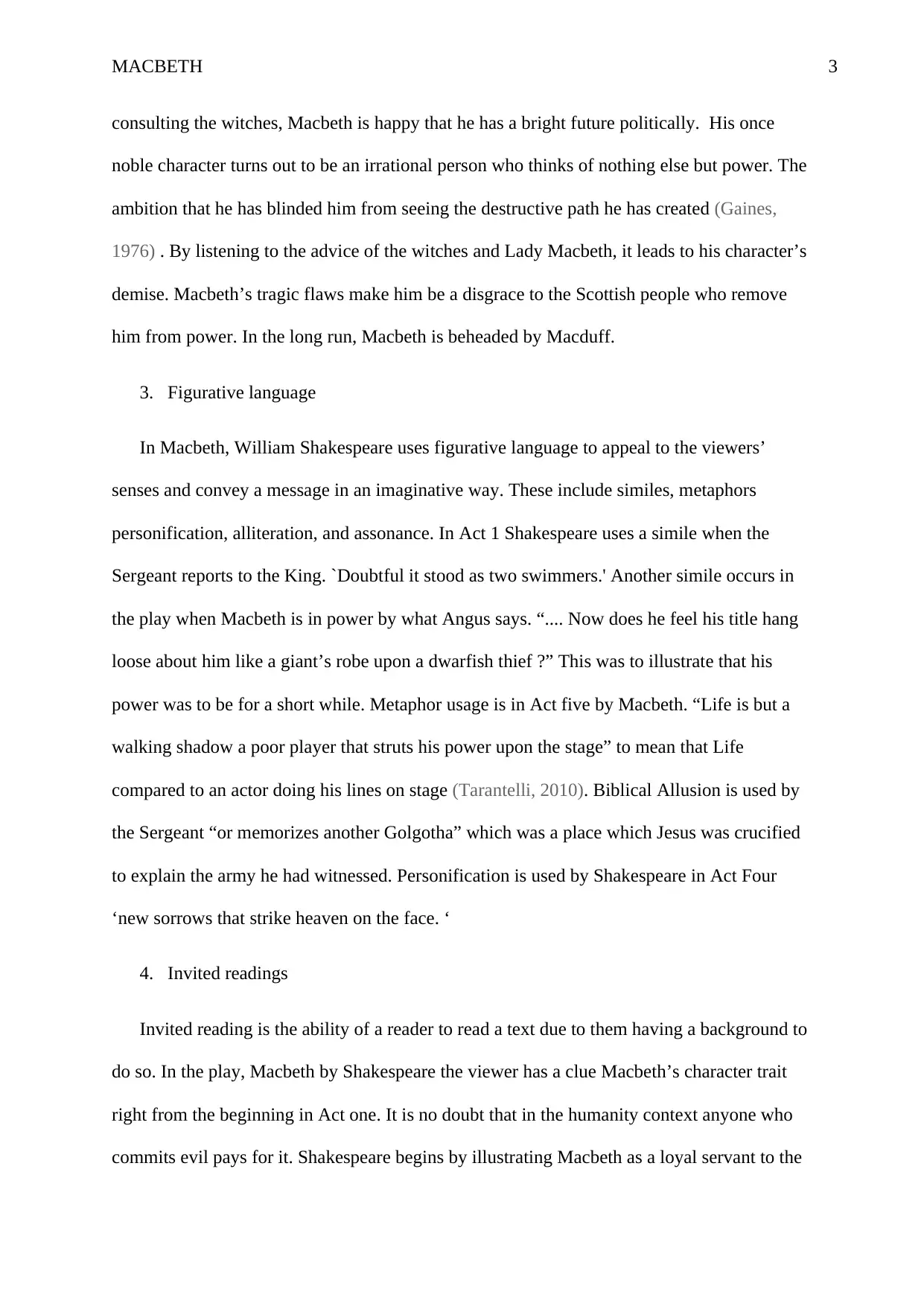

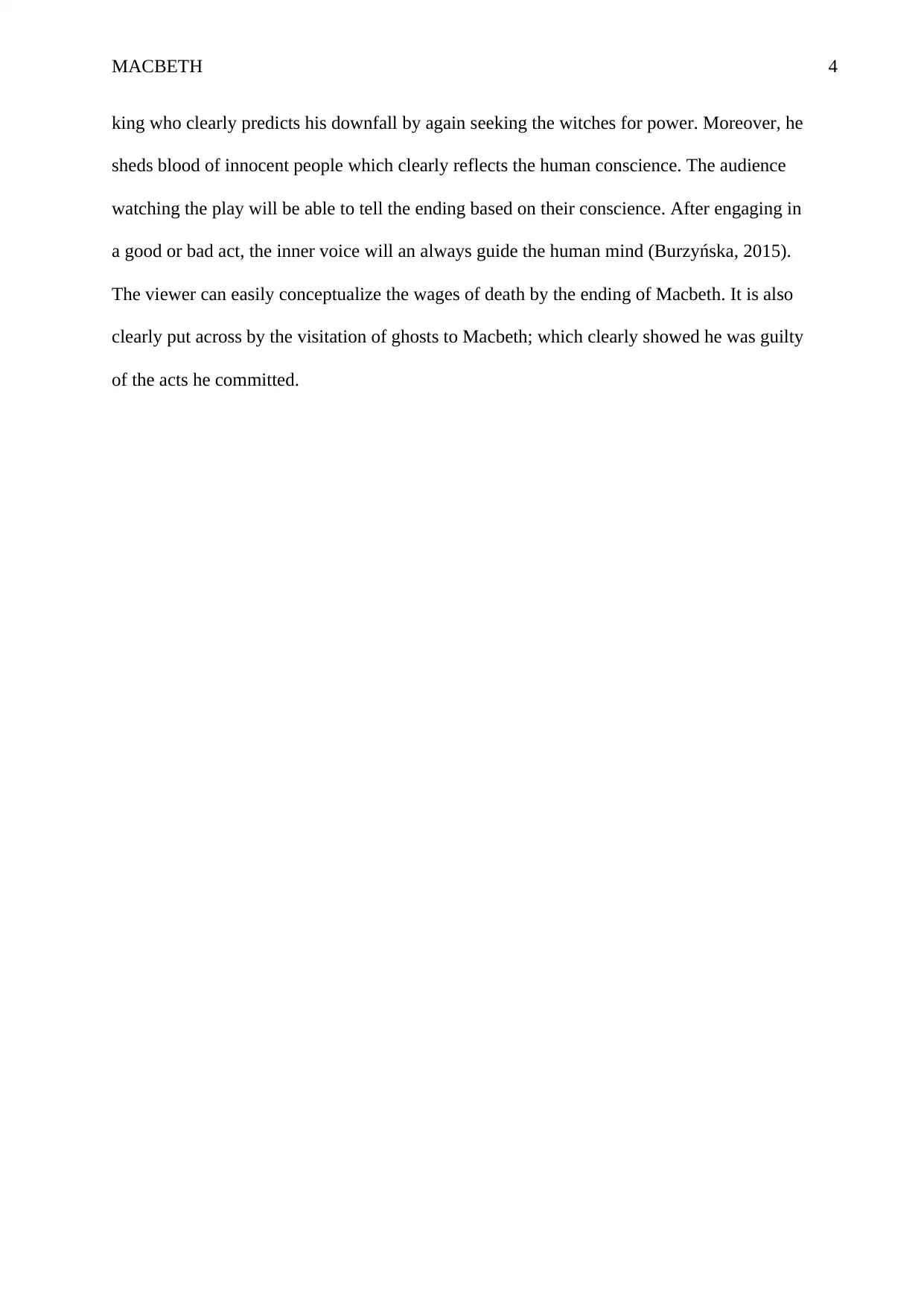
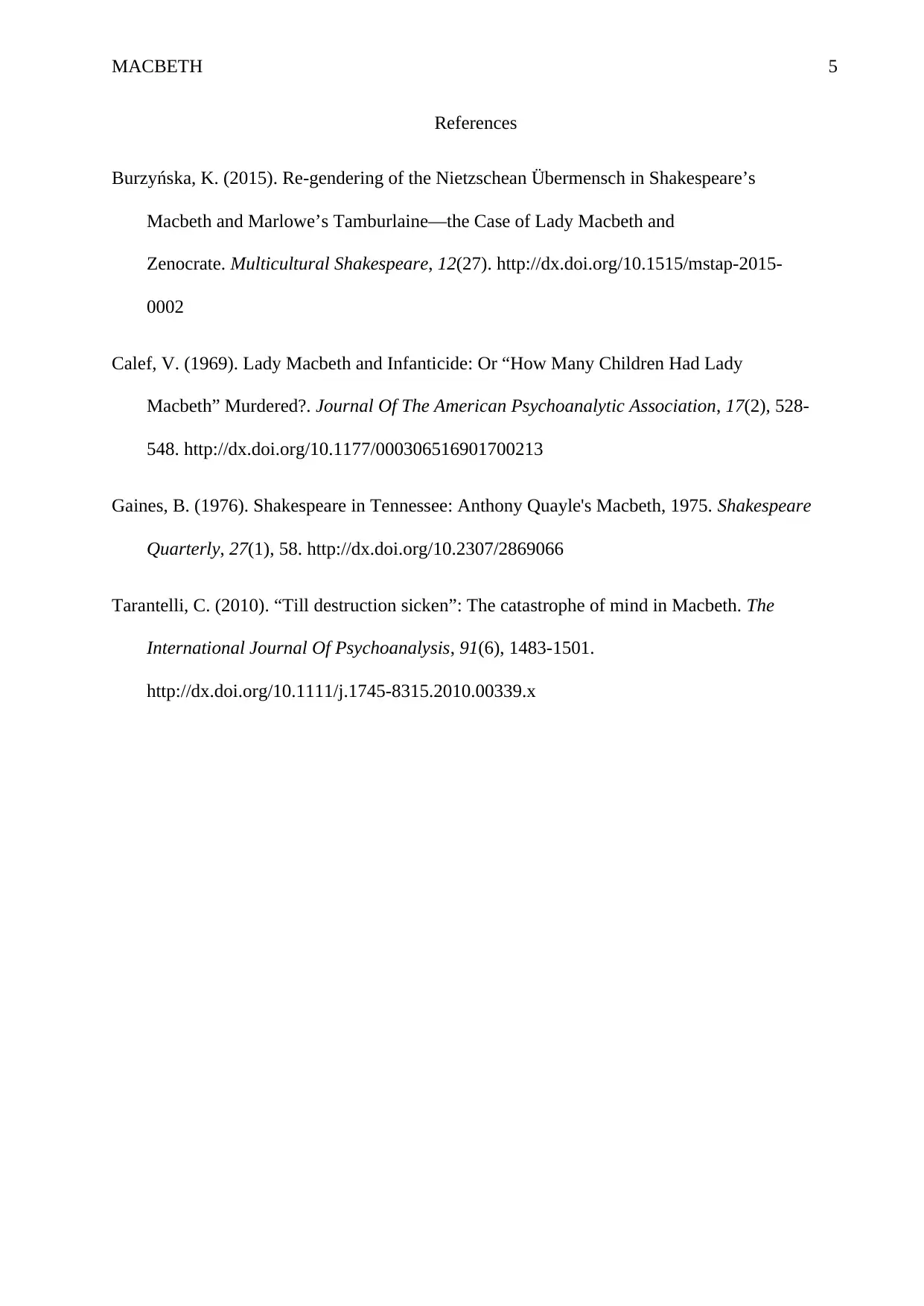







![[object Object]](/_next/static/media/star-bottom.7253800d.svg)